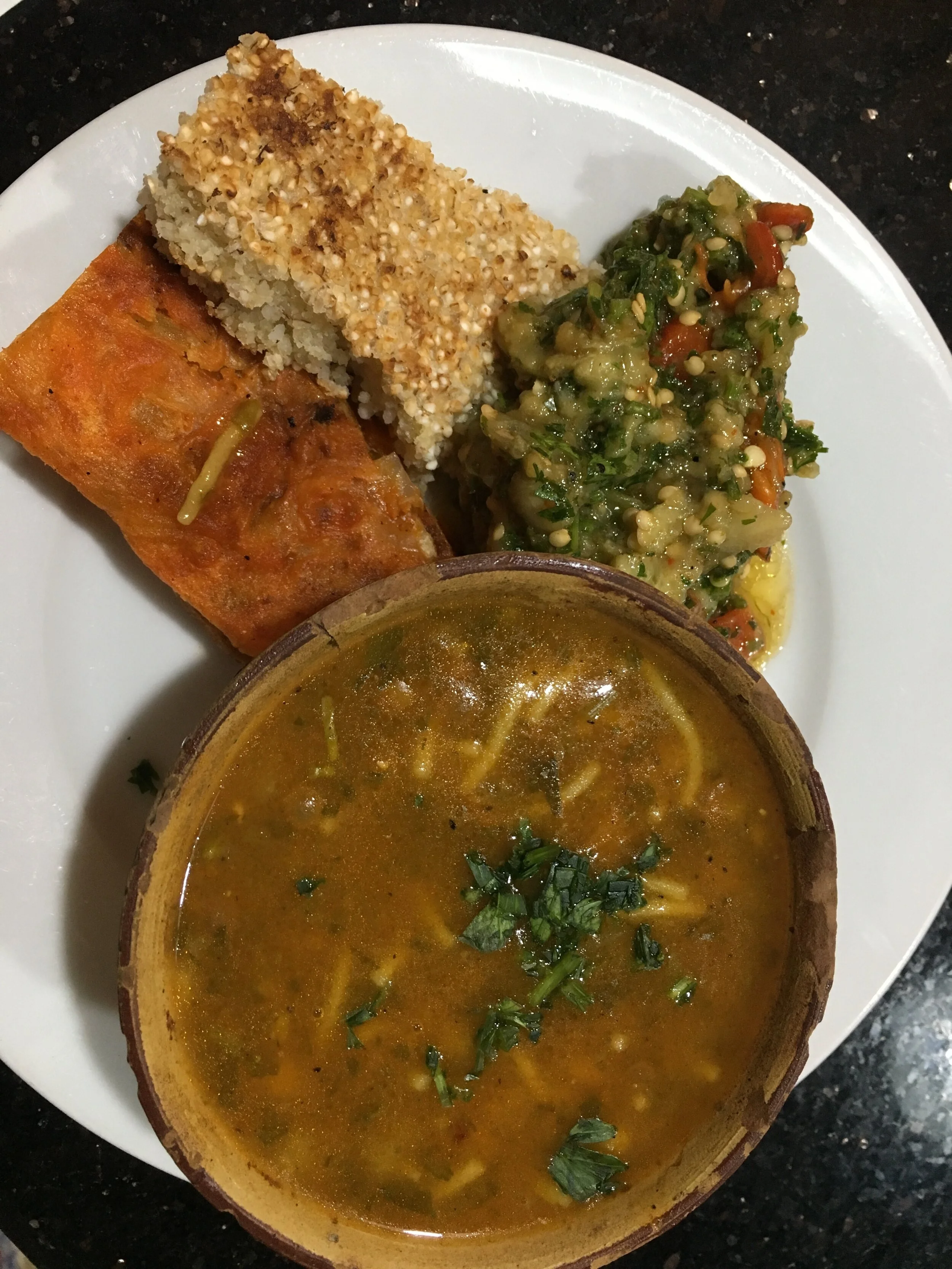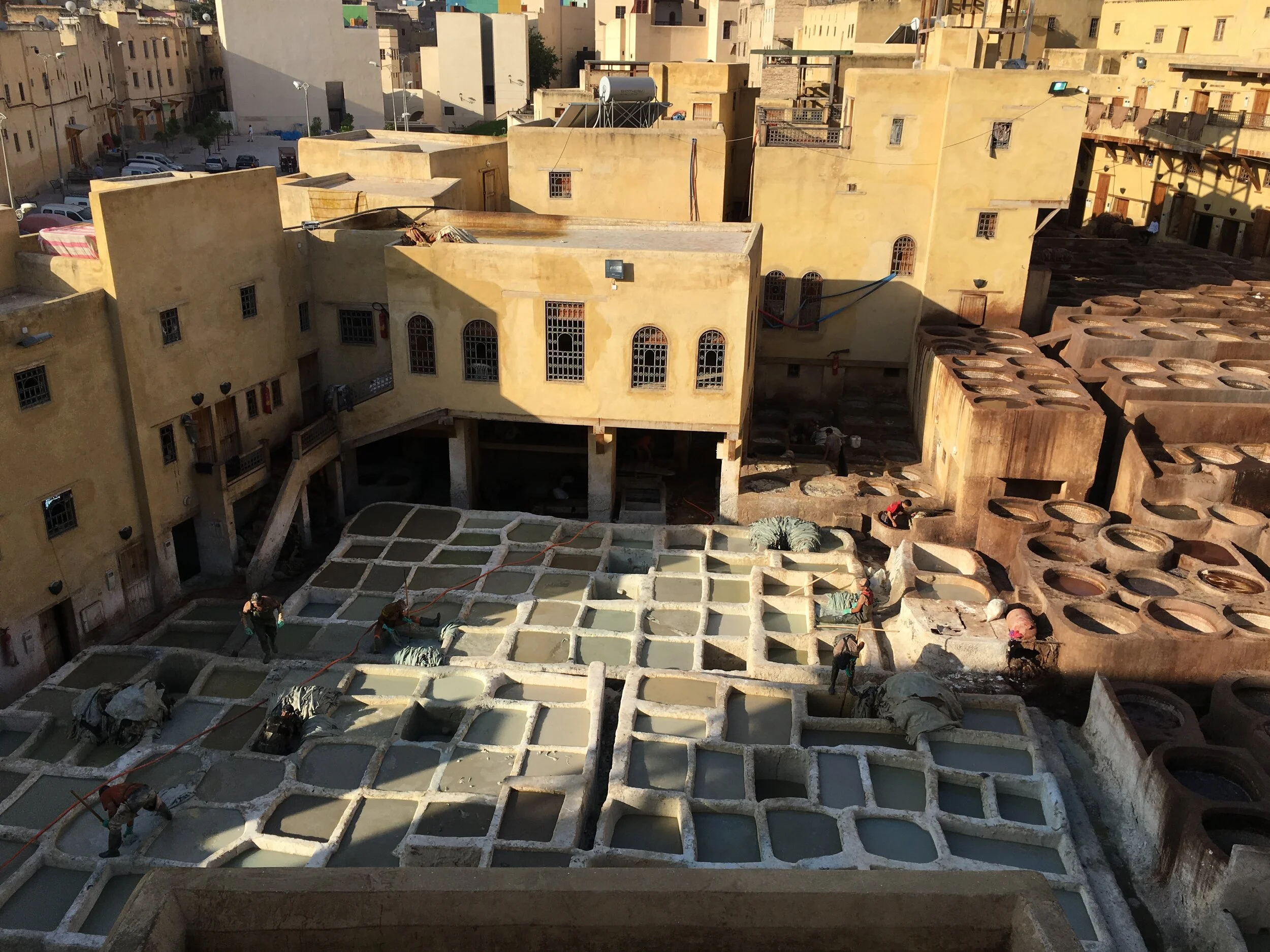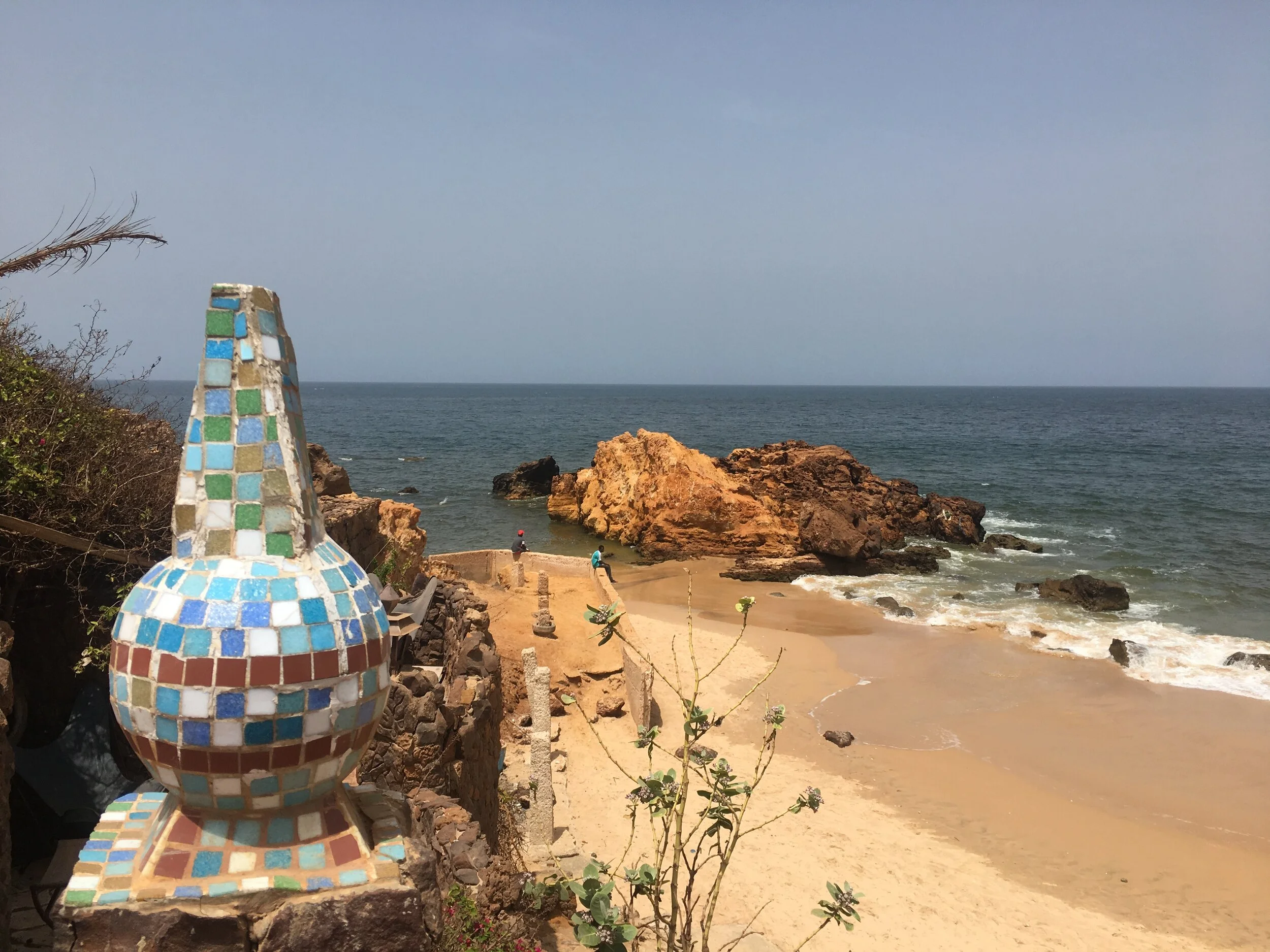Moroccan Cooking
I had been waiting to feast on the Moroccan delights since about a week into our time in Senegal when I got tired of the endless piles of rice and dry chicken. Tajines, the conical-shaped ceramic pots for which this famed dish is named, are on every menu. The Viande aux pruneaux (beef and prunes) is a sweet tagine served with a cinnamon and allspice sauce surrounding a tender cut of beef. A hard boiled egg and sesame seeds garnish this tajine along side prunes and sometimes apricots. I’ve had it twice and it’s been my favorite Moroccan dish so far. Couscous is the national dish of Morocco, also served in a tajine. It comes with carrots, eggplant and a choice of various meats.
Zalouk egg plant salad is served with mahrash and spicy bread and harira soup.
Snail soup is on offer as a street food and vendors with carts of piled shells set up in the souks (food markets) and on the roads. Tacos are a stable on every fast food menu but they aren’t like any taco I’ve ever eaten. Most akin to a panini or a grilled wrap, meat or falafel is wrapped up with potatoes, sauce and vegetables then grilled.
The final chicken bastilla is dusted with confectioners sugar and cinnamon to balance the savory shredded chicken stuffing.
Moroccan tea is super bitter, which is cut with loads of sugar and sprigs of mint. Tea is everywhere and comes out of scalding hot ornate silver tea pots. Experts pour the tea from on high into small handle-less glass cups and back again to mix it in an elaborate display. The coffee is thick and equally sugary. It’s just as likely to be instant as not. There’s also a big fresh juice and mocktail culture here as alcohol is taboo for the muslim majority.
Black olives are simply salted while green (and the purple olives that grow on the same tree) are soaked over and over to lessen their bitterness before flavors like garlic and chili powder is added.
We took an amazing cooking class at Cafe Clock in Fez led by the hilarious and talented Souyed who took us to the market, told us stories about Moroccan home remedies and taught us to cook a salad, soup, main and dessert.
Camel steak, burgers and kabobs aren’t uncommon. The meat is rumored to strengthen male virility.
Stretchy Moroccan filo dough is made on a hot griddle and brushed with olive oil to prevent sticking.
Moraccans love their bread it comes in tons of sizes and textures. It’s often greasy and as our cooking instructor told us, Moroccans don’t mind a big belly or behind.
Morocco grows a ton of produce and it’s almost all organically grown and brought into the medina by push cart or donkey.
The teaching kitchen in Cafe Clock is a beautiful and cozy space filled with wood and natural light.
The chickpeas for the Harira were pealed so they cooked faster. We roasted the peppers and egg plant on the metal rack over a gas range for the zalouk salad. The eggs were used for the Fassi maccaroons and in the filling for the chicken bastilla.
The citrus macroons used the zest and juice of two huge lemons and an orange, 4 eggs, powdered sugar, flour, coconut, oil, and orange water.














